Create an account
Welcome! Register for an account
La password verrà inviata via email.
Recupero della password
Recupera la tua password
La password verrà inviata via email.
-
- container colonna1
- Categorie
- #iorestoacasa
- Agenda
- Archeologia
- Architettura
- Arte antica
- Arte contemporanea
- Arte moderna
- Arti performative
- Attualità
- Bandi e concorsi
- Beni culturali
- Cinema
- Contest
- Danza
- Design
- Diritto
- Eventi
- Fiere e manifestazioni
- Film e serie tv
- Formazione
- Fotografia
- Libri ed editoria
- Mercato
- MIC Ministero della Cultura
- Moda
- Musei
- Musica
- Opening
- Personaggi
- Politica e opinioni
- Street Art
- Teatro
- Viaggi
- Categorie
- container colonna2
- container colonna1
26
marzo 2010
assoloshow Claude Collins-Stracensky / Haroon Mirza
parola d'artista
Seconda coppia d’artisti per la nuova rubrica international di Exibart. In rigoroso bilinguismo anglo-italiano, due emergenti raccontano il loro lavoro. In occasione d’una mostra milanese e di un’altra in quel di Dublino. Da leggere in rapidità per poi fiondarsi in galleria, ché le personali stanno per chiudere. In attesa della terza accoppiata in arrivo sul prossimo Exibart.onpaper...
CLAUDE
COLLINS-STRACENSKY (Lakewood, Ohio, 1975)
COLLINS-STRACENSKY (Lakewood, Ohio, 1975)
Years ago a good friend gave me
a book that a quote leapt out of and its stuck with me. I’ve come to realize
this quote has quietly been at the foundation of my practice since reading it
about 15 years ago and my relationship with it is constantly evolving. It’s as
if Einstein and Infield wrote a playful “Haiku” that’s perpetually unfolding,
growing, and breathing. For me its outlined a holistic perspective on seeing
and understanding the world, and a way of seeing the mechanisms we employ to
form our notion of experience; our experience with the world, ourselves, and
with each other. It’s these mechanisms that intrigue me.
a book that a quote leapt out of and its stuck with me. I’ve come to realize
this quote has quietly been at the foundation of my practice since reading it
about 15 years ago and my relationship with it is constantly evolving. It’s as
if Einstein and Infield wrote a playful “Haiku” that’s perpetually unfolding,
growing, and breathing. For me its outlined a holistic perspective on seeing
and understanding the world, and a way of seeing the mechanisms we employ to
form our notion of experience; our experience with the world, ourselves, and
with each other. It’s these mechanisms that intrigue me.
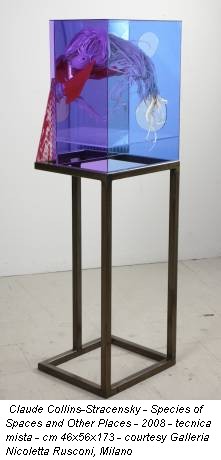 “Physical
“Physicalconcepts are free creations of the human mind, and are not, however it may
seem, uniquely determined by the external world. In our endeavor to understand
reality we are somewhat like a man trying to understand the mechanism of a
closed watch. He sees the face and the moving hands, even hears it’s ticking,
but he has no way of opening the case. If he is ingenious he may form some
picture of a mechanism which could be responsible for all the things he
observes, but he may never be quite sure his picture is the only one which
could explain his observations. He will never be able to compare his picture
with the real mechanism and he cannot even imagine the possibility of the
meaning of such a comparison”. [Albert Einstein and Leopold Infeld, The Evolution of
Physics
(1938) from The Dancing Wu Li Masters: an Overview of the New Physics by Gary Zukav (1979)]
I make work to share the
curiosity, play, and enjoyment I experience in the day-to-day, and in my
practice. In the work I set up structures to play within; optically,
conceptually, energetically, and experientially in order to enable the viewer a
new way of seeing, and experiencing the structures around them, if only for the
time they are in the presence of the work, but ultimately to carry the experience
into their world and the structures that are set up within it.
curiosity, play, and enjoyment I experience in the day-to-day, and in my
practice. In the work I set up structures to play within; optically,
conceptually, energetically, and experientially in order to enable the viewer a
new way of seeing, and experiencing the structures around them, if only for the
time they are in the presence of the work, but ultimately to carry the experience
into their world and the structures that are set up within it.
Anni
fa un buon amico mi diede un libro dal quale saltò fuori una citazione che mi
stregò. Sono arrivato a convincermi che questa citazione è stata alla base del
mio lavoro fin dal momento in cui l’ho letta, circa 15 anni fa, e che da allora
il mio rapporto con essa è stato in costante evoluzione. È come se Einstein e
Infield avessero scritto un modello “Haiku” in costante
sviluppo, crescita, ideazione; mi ha suggerito una comprensione in una
prospettiva più olistica della realtà e una maniera diversa, intrigante, di
sentire i meccanismi alla base della nostra esperienza del mondo, di noi stessi
e degli altri.
fa un buon amico mi diede un libro dal quale saltò fuori una citazione che mi
stregò. Sono arrivato a convincermi che questa citazione è stata alla base del
mio lavoro fin dal momento in cui l’ho letta, circa 15 anni fa, e che da allora
il mio rapporto con essa è stato in costante evoluzione. È come se Einstein e
Infield avessero scritto un modello “Haiku” in costante
sviluppo, crescita, ideazione; mi ha suggerito una comprensione in una
prospettiva più olistica della realtà e una maniera diversa, intrigante, di
sentire i meccanismi alla base della nostra esperienza del mondo, di noi stessi
e degli altri.
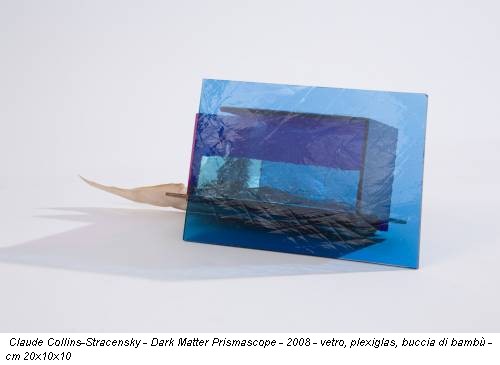
“I concetti della fisica sono
libere creazioni dello spirito umano, e non sono, nonostante le apparenze,
determinati unicamente dal mondo esterno. Nel nostro sforzo di comprendere la realtà siamo in un certo senso come
un uomo che cerca di capire il meccanismo di un orologio chiuso. Vede il
quadrante e le lancette che si muovono, sente il ticchettio, ma non riesce ad
aprire la cassa. Se è ingegnoso può crearsi un’immagine di un meccanismo che
potrebbe essere responsabile di tutte le cose che osserva, ma non sarebbe mai
del tutto certo che la sua immagine sia l’unica possibile spiegazione delle
osservazioni. Non sarà mai in grado di confrontare la sua immagine con il
meccanismo reale e non può nemmeno immaginare il significato di un tale
confronto” [Albert Einstein e Leopold Infeld, L’evoluzione della fisica (1938) cit. in The Dancing Wu Li
Masters: an Overview of the New Physics di
Gary Zukav (1979)]
Il mio lavoro
significa condividere la curiosità, il gioco, e il piacere che assaporo
quotidianamente e nella mia attività. Ho creato installazioni per giocarci
dentro; otticamente, concettualmente, energeticamente. Per abilitare gli
spettatori a un nuovo modo fare esperienza delle cose che hanno intorno anche
se solo per il tempo che restano in presenza del mio lavoro, ma con l’obiettivo
di mantenere
vivo il ricordo dell’esperienza che hanno compiuto.
significa condividere la curiosità, il gioco, e il piacere che assaporo
quotidianamente e nella mia attività. Ho creato installazioni per giocarci
dentro; otticamente, concettualmente, energeticamente. Per abilitare gli
spettatori a un nuovo modo fare esperienza delle cose che hanno intorno anche
se solo per il tempo che restano in presenza del mio lavoro, ma con l’obiettivo
di mantenere
vivo il ricordo dell’esperienza che hanno compiuto.
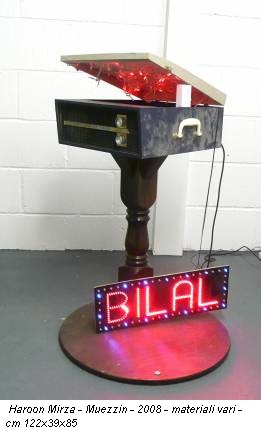 HAROON MIRZA (Londra, 1977)
HAROON MIRZA (Londra, 1977)
The perceptual shift from hearing
to listening is poetically illustrated in Lars Von Trier’s film Dancer in the
Dark in which wannabe musical performer, Selma Jezkova, played by Björk, slowly
becomes blind. The deterioration of her eyesight leads to an increased
awareness of her acoustic environment in which each noise becomes an orchestral
part in a perceptual soundtrack to the fantasized musical of her life.
to listening is poetically illustrated in Lars Von Trier’s film Dancer in the
Dark in which wannabe musical performer, Selma Jezkova, played by Björk, slowly
becomes blind. The deterioration of her eyesight leads to an increased
awareness of her acoustic environment in which each noise becomes an orchestral
part in a perceptual soundtrack to the fantasized musical of her life.
The distinctions between noise,
sound, and music is a fundamental part of my work. I see these distinctions
closely associated with the perceptual nuances between hearing and listening.
Through Lo-Fi yet complex assemblages and installations, I attempt to isolate
moments where noise is perceived as sound and sound is perceived as music and
explore the possibility of the visual and acoustic as one singular aesthetic
form.
sound, and music is a fundamental part of my work. I see these distinctions
closely associated with the perceptual nuances between hearing and listening.
Through Lo-Fi yet complex assemblages and installations, I attempt to isolate
moments where noise is perceived as sound and sound is perceived as music and
explore the possibility of the visual and acoustic as one singular aesthetic
form.
The arrangement of furniture,
household electronics and audiovisual material in my work is formulated with
the intention to compose a piece of music. Using material in this way to
compose music reveals an aesthetic logic based on functionality; all material
in a work plays a part in forming the music and therefore the arrangement of
this material becomes an aesthetic concern.
household electronics and audiovisual material in my work is formulated with
the intention to compose a piece of music. Using material in this way to
compose music reveals an aesthetic logic based on functionality; all material
in a work plays a part in forming the music and therefore the arrangement of
this material becomes an aesthetic concern.
I consider the acoustic and
visual of equal significance to what I do as an artist. It’s a practice that
comes from the discursive sensibilities of art, the utilitarian processes of
Design, and the love of music.
visual of equal significance to what I do as an artist. It’s a practice that
comes from the discursive sensibilities of art, the utilitarian processes of
Design, and the love of music.
Il passaggio tutto interiore dal sentire all’ascoltare
è descritto poeticamente nel film di Lars Von Trier Dancer
in the Dark, nel quale un’appassionata di musical, Selma
Jezkova, interpretata da Björk, diventa lentamente cieca. Il deterioramento della vista
porta Selma a una maggiore consapevolezza del proprio ambiente acustico, nel
quale ogni rumore diventa intermezzo musicale di una colonna sonora desiderosa
di esorcizzare la tragica realtà attraverso il suono.
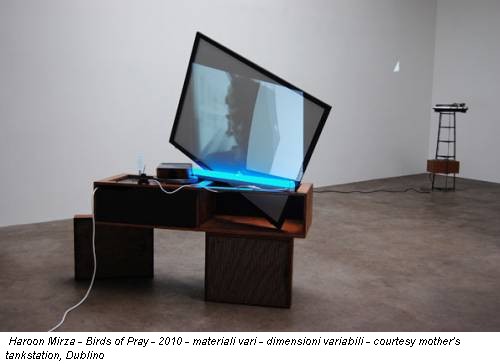
Le
distinzioni tra rumore, suono, e musica sono una parte fondamentale del mio
lavoro. Io
vedo queste distinzioni strettamente legate alle sfumature percettibili tra il sentire e l’ascoltare. Attraverso la bassa fedeltà dell’audio e le mie articolate
installazioni, provo a isolare i momenti dove il rumore viene percepito come
suono e il suono è percepito come musica, e a esplorare le potenzialità del
visivo e del sonoro concependoli come un unica forma estetica.
è descritto poeticamente nel film di Lars Von Trier Dancer
in the Dark, nel quale un’appassionata di musical, Selma
Jezkova, interpretata da Björk, diventa lentamente cieca. Il deterioramento della vista
porta Selma a una maggiore consapevolezza del proprio ambiente acustico, nel
quale ogni rumore diventa intermezzo musicale di una colonna sonora desiderosa
di esorcizzare la tragica realtà attraverso il suono.

Le
distinzioni tra rumore, suono, e musica sono una parte fondamentale del mio
lavoro. Io
vedo queste distinzioni strettamente legate alle sfumature percettibili tra il sentire e l’ascoltare. Attraverso la bassa fedeltà dell’audio e le mie articolate
installazioni, provo a isolare i momenti dove il rumore viene percepito come
suono e il suono è percepito come musica, e a esplorare le potenzialità del
visivo e del sonoro concependoli come un unica forma estetica.
La disposizione
dei mobili, degli elettrodomestici e dei materiali audiovisivi è formulata, nel
mio lavoro, con l’intento di comporre un brano musicale. Pertanto questo
particolare utilizzo dei materiali rivela una
logica estetica basata sulla funzionalità.
dei mobili, degli elettrodomestici e dei materiali audiovisivi è formulata, nel
mio lavoro, con l’intento di comporre un brano musicale. Pertanto questo
particolare utilizzo dei materiali rivela una
logica estetica basata sulla funzionalità.
Considero il
visivo e il sonoro di pari importanza per ciò che realizzo come artista. È una pratica che deriva dalla capacità discorsiva
dell’arte, dai processi utilitaristici del design, e dall’amore per la musica.
visivo e il sonoro di pari importanza per ciò che realizzo come artista. È una pratica che deriva dalla capacità discorsiva
dell’arte, dai processi utilitaristici del design, e dall’amore per la musica.
articoli correlati
La recensione della mostra di Collins-Stracensky
La prima puntata di asSOLOshow
asSOLOshow è una rubrica diretta da marianna agliottone
*articolo pubblicato su
Exibart.onpaper n. 64. Te l’eri perso? Abbonati!
dal 9 febbraio al 28 marzo 2010
Claude Collins-Stracensky
Galleria Nicoletta Rusconi
Corso Venezia, 22 (zona Palestro–San Babila) – 20121 Milano
Orario: da martedì a sabato ore 15-19
Ingresso libero
Info: tel. +39 02784100; fax +39 0277809369; info@nicolettarusconi.com;
www.nicolettarusconi.com
dal 24 febbraio al 27 marzo 2010
Haroon Mirza – Anthemoessa
Mother’s Tankstation
41-43 Watling Street (Ushers Island) – Dublin 8
Orario: da giovedì a domenica
ore 12-18 o su appuntamento
Ingresso libero
Info: tel +353 16717654; gallery@motherstankstation.com; www.motherstankstation.com
[exibart]





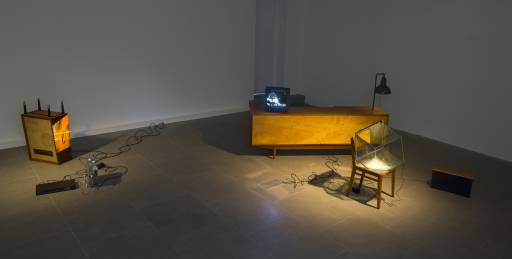
.jpg)
.jpg)
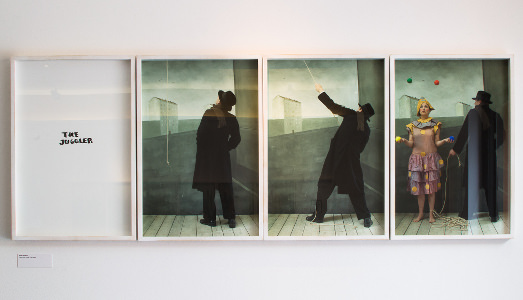
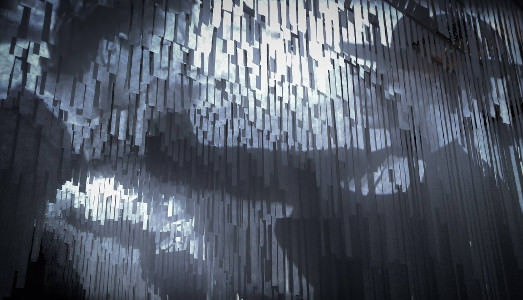
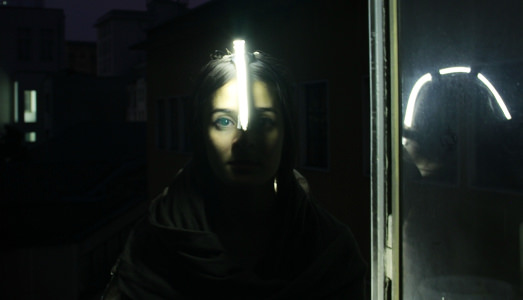




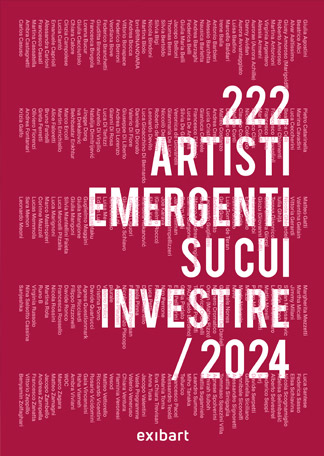
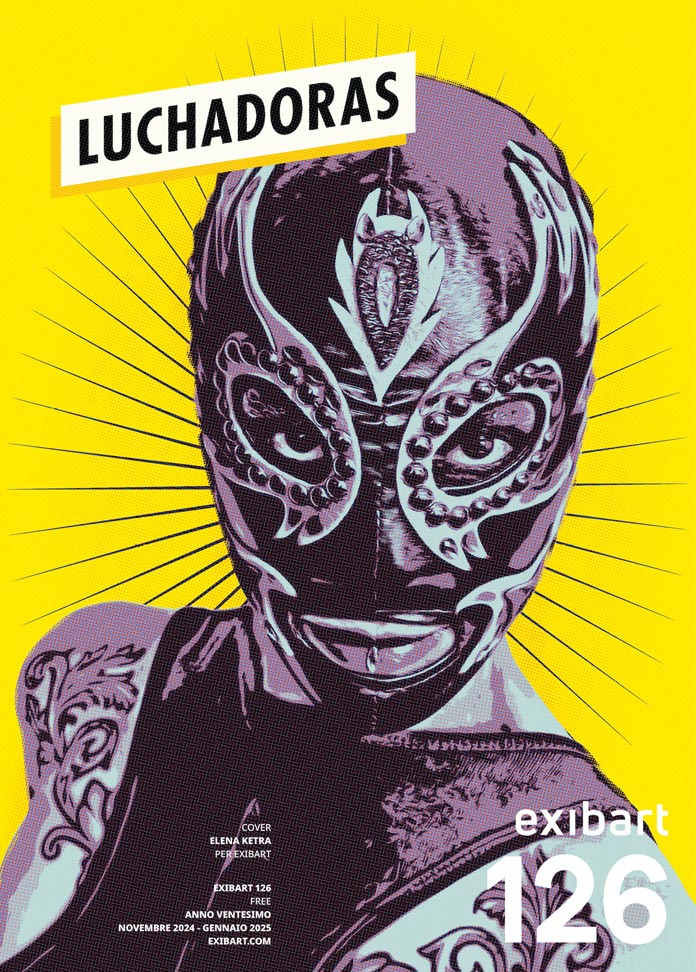

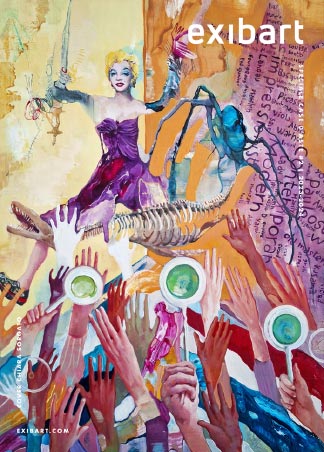
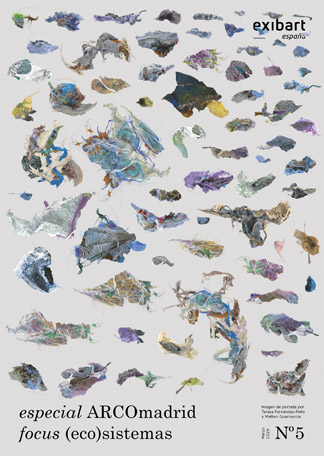
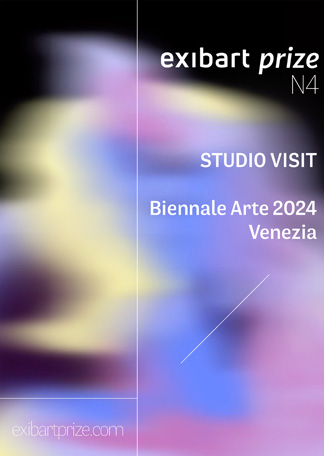
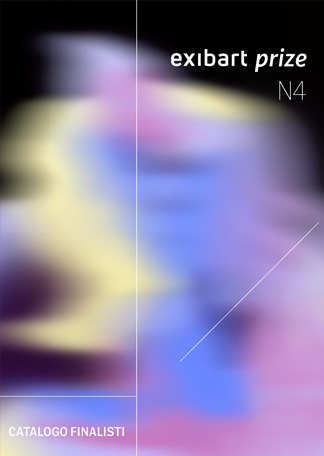
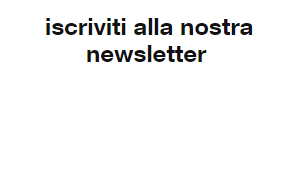




I am happy to announce that Haroon Mirza was selected for this years Art Unlimited at Art 41 Basel. Enjoy!